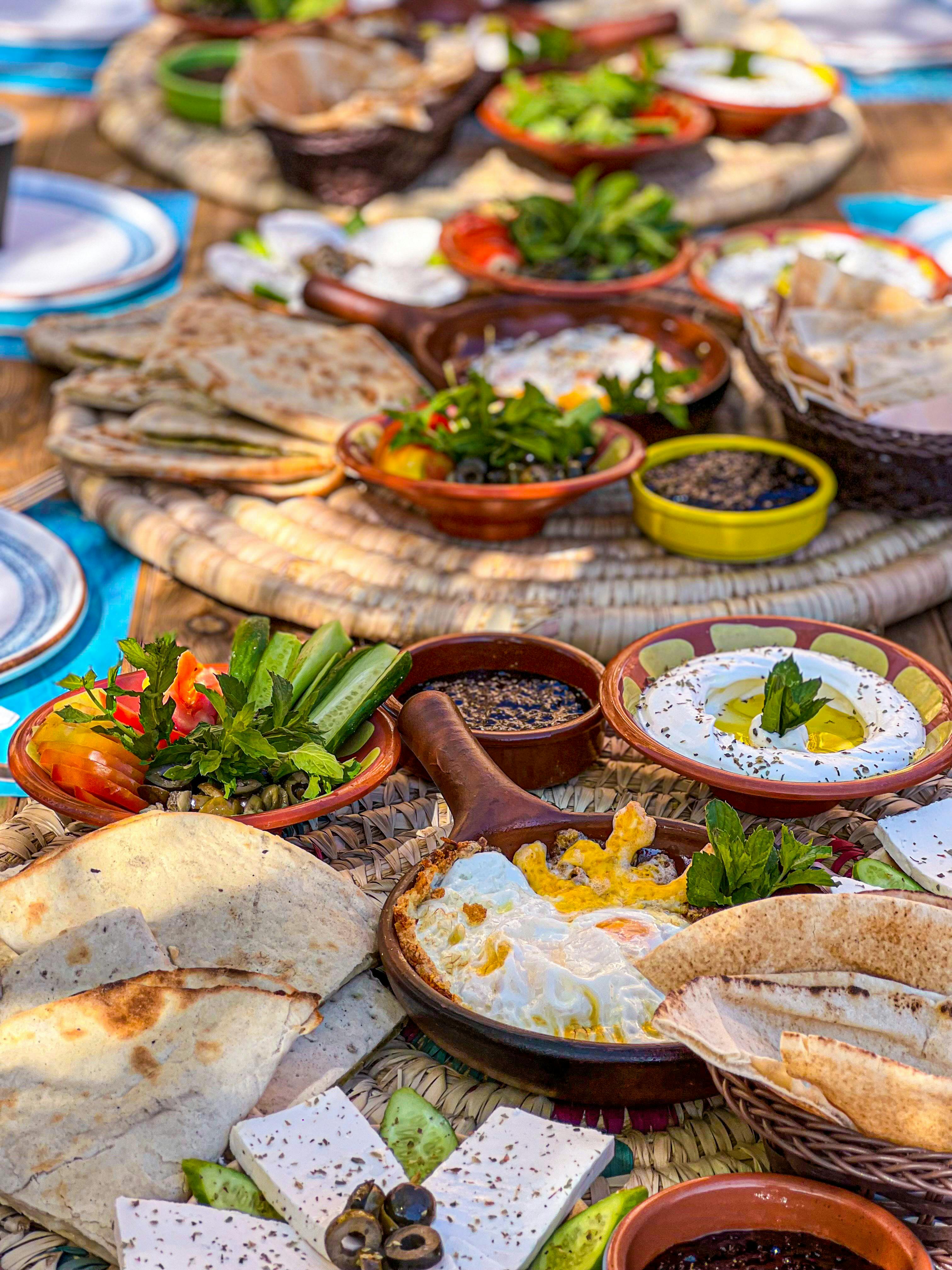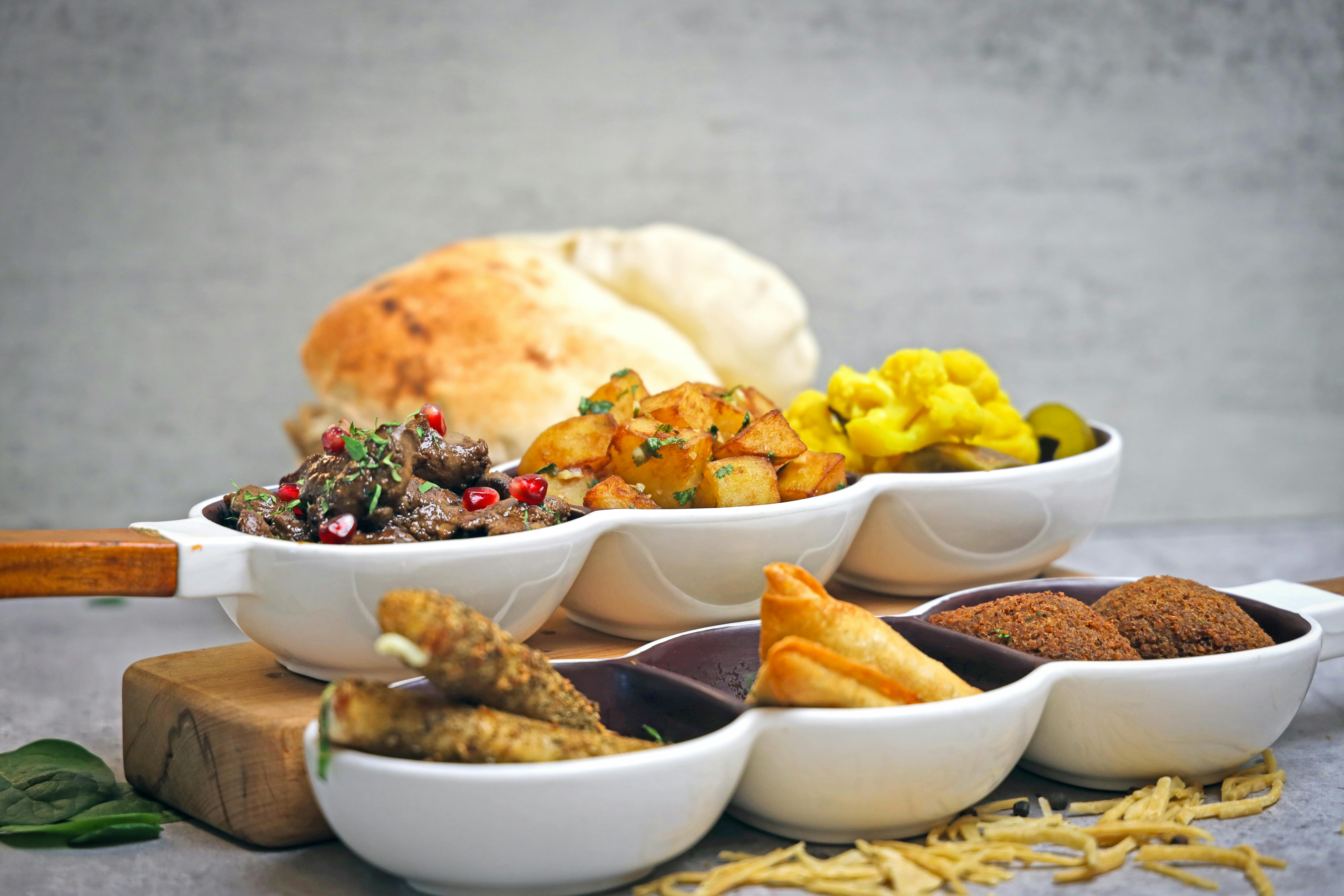Lebanese Meze: Expert Secrets for Vibrant Home Entertaining
Have you ever sat at a Lebanese table and felt completely swept up in the swirl of flavors, laughter, and generosity? If so, you’re not alone; Lebanese meze has a way of turning any meal into a lively celebration. Personally, my first meze experience in Beirut’s lively Mar Mikhael district changed the way I host at home—suddenly, dinner wasn’t about single plates, but an unfolding mosaic of color, conversation, and discovery. What really stood out? The layered hospitality and inclusive spirit—a true feast for all senses, accessible to both seasoned cooks and curious newcomers1.
But here’s the thing: recreating that magic in your own kitchen is less about complicated recipes and more about embracing the vibe, rhythm, and the subtle art of preparing—and sharing—meze dishes. This guide is built for home entertainers who want their events to pulse with Lebanese warmth, flavor, and connection. It’s a hands-on, soulful, authenticity-rich approach pulled from professional hosts, culinary experts, and my own hosting hits (and, let’s be real, occasional flops).
What Makes Meze Unique?
So, what exactly is Lebanese meze? At the simplest level, meze is an assortment of small plates—ranging from creamy dips to grilled meats, pickles, pastries, and vibrant salads—that anchors virtually every Lebanese social occasion. It’s not a strict starter; it’s the heartbeat of communal dining (tarab) that encourages sharing, storytelling, and spontaneous laughter2.
“Meze is more than food. It’s a gesture—a way to say, ‘you’re welcome, stay a while, eat, talk, live’.”
From my experience, the magic is in the variety and how everything fits together. No two meze tables are identical, and the joy comes from personalization: family recipes, market haul improvisations, and the region’s rhythm—all tossed in together. The best part? You don’t need to master every dish; you just need to create a welcoming, abundant spread. Honestly, I used to stress about getting every item “just right,” but nowadays, I focus on the vibe and let guests contribute if they want.
Expert Insight
The hallmark of Lebanese meze isn’t complexity—it’s rhythm. Start with cold dishes (dips, salads), then ease into warm bites and grilled specialties, always keeping bread within reach. For me, this mental roadmap changed everything: prepping in waves, creating a natural flow, and letting guests graze freely.
The Essential Meze Dishes
What do most Lebanese meze tables include? There are classics you’ll see everywhere—hummus, baba ghanouj, tabbouleh, and kibbeh—but also endless regional riffs. During my last visit to a friend’s mountain home, our “classic meze” included a handful of surprises: wild thyme salad, homemade labneh balls, and carob molasses dip. That’s meze—fluid, creative, and always anchored by a few foundational dishes:
- Hummus: The universal chickpea dip—creamy, nutty, and usually topped with olive oil, pine nuts, and paprika3.
- Baba Ghanouj: Roasted eggplant dip with tahini, garlic, and lemon. Smoky, tangy, absolutely essential.
- Tabbouleh: Parsley-driven salad with bulgur, tomatoes, and bright lemon. The greenest, freshest dish at the table.
- Labneh: Strained yogurt “cheese”—slathered with olive oil, sometimes formed into balls, often dusted with za’atar.
- Kibbeh: Bulgur and meat croquettes, often served fried or raw (kibbeh nayyeh).
- Warak Enab: Stuffed grape leaves, filled with rice, pine nuts, and herbs.
There’s no pressure to include every item. In fact, I recommend starting with 4-6 basics and adding a couple of new experiments each time you host. This is where meze naturally adapts to your skills and your guests’ tastes.
Lebanon is home to more than 30 distinct meze varieties, with regional specialties like batata harra (spicy potatoes) in Beirut and shanklish (aged cheese balls) in the North. Many Lebanese families host guests with at least 10 different meze plates, making entertaining truly vibrant and abundant4.
Insider Hospitality Secrets
Here’s an insider tip I learned after years of hosting: generous hospitality doesn’t depend on how much you cook—it hinges on creating an atmosphere where guests feel welcome to snack, linger, and jump into conversation. Place serving platters at every corner of the table, keep drinks within reach, and encourage guests to build their own bites—a sprinkle of sumac, a drizzle of olive oil, a heap of pickled turnip. The best hosts aren’t controlling—they’re orchestrators of connection.
Last autumn, as I scrambled to finish my fattoush, I realized my guests were already mingling with fresh pita and labneh. Lesson learned: always let people start nibbling early. Meze is as much about the flow of the gathering as it is about the food.
Building Your Year-Round Entertaining Strategy
Let’s step back for a second. Hosting Lebanese meze at home isn’t just about a single menu—it’s about creating a repeatable, adaptable, and joy-filled template for vibrant gatherings. Here’s what I wish I’d known in my early days: the heart of Lebanese entertaining is resilience, creativity, and giving every guest a sense of “being part of the story.” By planning a flexible template—seasonal swap-outs, crowd-sourced dishes, and simple base staples—you can host any time of year, and always improvise based on who shows up and what’s available.
- Change up meze based on seasonal markets—try new herbs and local cheeses.
- Host potlucks where each guest brings a meze specialty from their region or family.
- Mix up the ratio of dips, salads, pastries, and grilled items depending on weather and crowd size.
Let that sink in—meze doesn’t follow a single “best” blueprint. Instead, it rewards curiosity, improvisation, and hospitality. Months from now, your meze spread might look totally different, and that’s genuinely the point.
Actionable Takeaway
Don’t wait for a perfect moment to host—set a date, send an invite, and let Lebanese meze weave its magic. I’ve found that the best gatherings start with a little planning, a dash of courage, and a lot of heart.
Ensuring Longevity and Creative Repurposing
The beauty of meze entertaining is its adaptability. You can easily update your approach as your cooking skills grow, new friends arrive, and seasonal produce shifts. Repurposing is second nature: leftover dips become next-day sandwiches, pickles accent salads, and meze pastries double as lunchbox snacks.
- Share your favorite serving platters or table photos on social media for inspiration.
- Transform your meze strategy into a regular gathering—monthly dinner club, seasonal potluck, or family reunion centerpiece.
- Revisit this guide as a living resource; update ingredients and plating tips as you discover new combinations.
| Repurposing Option | How-To | Seasonality | Community Impact |
|---|---|---|---|
| Social Media Post | Photo & mini-recipe | Any season | Builds connections |
| Newsletter Block | Highlight 1-2 dishes | Spring/Summer | Educates & inspires |
| Webinar/Podcast | Host discussion, share tips | Fall/Winter | Interactive learning |
Final Thoughts: Meze as an Invitation
To wrap it up, here’s my biggest lesson—a Lebanese meze table is ultimately an invitation. Not to impress, but to connect; not to amaze, but to nourish. As you refine your own hosting strategy, remember that every gathering is a new chance to share stories, taste new flavors, and create belonging. If you ever doubt yourself (“Will my guests notice the imperfect plating?”), know this: in Lebanon, meze is an embrace, and every table is richer for its quirks.
“Food is how we remember, connect, and celebrate our shared journey.”
Traditional Lebanese home gatherings often last five hours or more, with meze stretching across the entire evening. The emphasis remains on connection, not time8.
Call to Action
Ready to reinvent your home entertaining routine? Start with Lebanese meze—invite friends, experiment boldly, and celebrate life’s vibrant unpredictability. Want to share your journey? Post your favorite photos, stories, and tips and join the meze movement!
References




